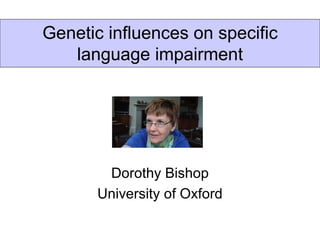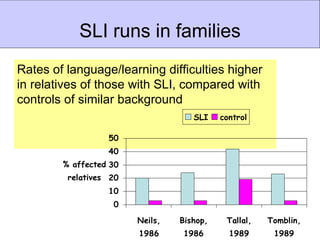The document discusses the genetic influences on specific language impairment (SLI), emphasizing familial patterns and the differences in impairment severity in monozygotic (MZ) versus dizygotic (DZ) twins. It highlights recent genetic research, including the association of certain genes such as foxp2 and cntnap2 with language disorders, while explaining that SLI functions as a complex multifactorial disorder that can aggregate in families yet cannot be traced through traditional genetics. The text also addresses misconceptions about heritability and the potential for intervention despite genetic predispositions.















